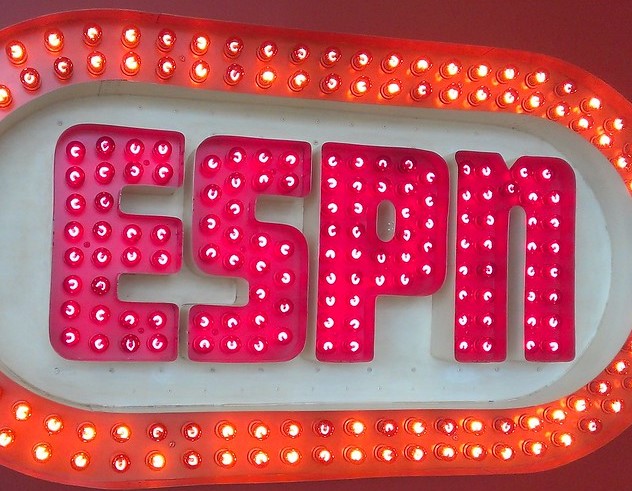
BRISTOL, Connecticut, U.S.A. — ESPN and teenagers have a lot in common – fun, technology, change, and most importantly, sports.
But as much as teens might think they need ESPN, the sports media giant needs them even more.
“Teens are the biggest fans, absolutely,” said Artie Bulgrin, a senior vice-president and ratings analyst at ESPN. “We skew to a younger audience.”
SportsCenter anchor Rich Eisen said ESPN’s style – not taking sports too seriously and using comedy to attract viewers – appeals to young people.
ESPN lures teen viewers with star athletes, the popular, self-promoting “This is SportsCenter” ad campaign, cutting edge technology and even the new, “futuristic” SportsCenter set.
Executive Editor John Walsh said the network uses many tactics to capture teenage viewers.
“It’s an important demographic,” said Walsh.
ESPN airs exciting and interesting plays over and over, added Walsh, which he said is something teens like.
“We try to inject as much humor as possible,” said Walsh, and uses plenty of cultural references. He said ESPN also tries to feature players or stars who are popular among teens.
ESPN knows that much of its success lies in the hands of its teenage audience, and is constantly trying to increase its teenage audience.
Mark Shapiro, ESPN executive vice-president, said the company is doing “significantly better” in the 12 to 24-year-old demographic, attributing the improvement to airing more Little League games, the rise of extreme sports and the X Games.
Most viewers watching the X Games are in the 12 to 24-year-old group, Shapiro said, adding that it is the toughest group to attract and “the most important and the most valuable” to advertisers.
Teenagers can depend on ESPN to provide all the information they need about sporting events that they didn’t have time to watch, Bulgrin said, and news on upcoming events as well.
According to Bulgrin, social currency matters most to young people.
“Sports and music, they go hand in hand,” said Bulgrin.
ESPN The Magazine took this into account in terms of clothing, the style of graphics used and subject matter, according to John Skipper, an executive vice-president at ESPN who is in charge of ESPN.com and the magazine.
In launching ESPN The Magazine, the company aimed at younger readers, Skipper said, avoiding the audience already locked up by Sports Illustrated.
Skipper credited the success of the popular magazine to having a younger staff. The magazine takes a look inside the sports, he said, rather than dwelling on a game that is already history.
“Kids care about that more,” said Skipper.
First-person features by athletes are popular with teenage readers, Skipper said, because younger readers are skeptical about the press and like to see articles entirely in the words of the subject rather than filtered by a writer.
Bulgrin cited an ESPN poll showing that teenagers are the biggest sports fans.
Of those questioned, 46 percent consider themselves “Serious-to-Super Fans,” according to Bulgrin, compared to 30 percent for the general population.
According to the latest research conducted by Teenage Research Unlimited, an organization that specializes in research on teens, more male ages 12 to 19 ranked ESPN or ESPN2 as their favorite than any other television network.
“It’s the fun that we have and kids like to have, in one cool, slick package,” said Eisen.
Skipper said the ESPN.com website is changed constantly, sometimes several times during the course of an important game.
While adults might find flashing icons and moving messages on their computer screen annoying, Skipper said, teenagers find them a cool, quick and convenient source of information.
According to Eisen, teenage boys have two passions: girls and sports.
“When I was a teenager, that’s all I cared about,” Eisen said.
T.J. O’Connor is a Reporter for Youth Journalism International.



